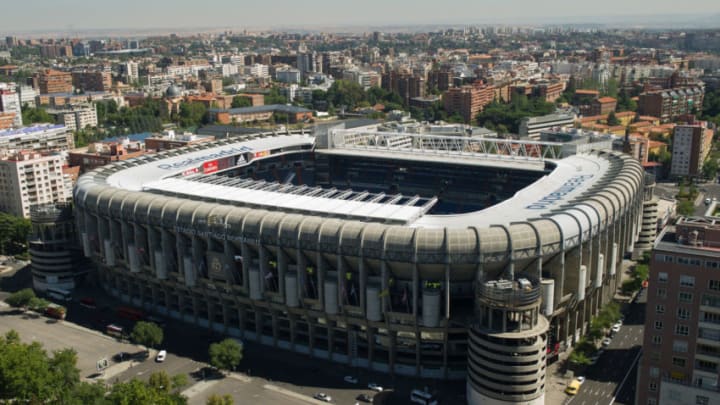
Before the Bernabeu
Real Madrid (or Madrid FC as it was known back then) started out life on a square of land on the corner of Calle Valázquez and Calle José Ortega y Gasset, which they named the Campo de Estrada after the marble merchant that owned the plot. The games played at that ground were unofficial until 1902 when the brothers, Juan and Carlos Pardos pumped enough money into the club to form a constitution and make the club a professional entity.
Real Madrid's first enclosed ground - Campo de la Avenida de la Plaza de Toros http://t.co/xmMJX9odfF pic.twitter.com/qYS57M8lic
— Estadios de España (@estadios_Spain) March 6, 2014
This prompted a move across the street to the site of Madrid’s old bullring, rather descriptively called Campo de la Avenida de la Plaza de Toros (field of the avenue of the bullring). The plot of land was officially designated a landfill site, but the club quickly made themselves at home, levelling and roping off a pitch. They even turned the nearby tavern into a changing room.
The new Madrid club spent near a decade at the Campo before moving to the Campo O’Donnell due to football’s growing popularity in the capital. The Campo O’Donnell was only slightly better than Madrid’s previous ground, however, the club once more made the most of their modest setting. As well as a yearly rent of 1,000 pesetas, Madrid spent 4,000 pesetas of its own money to build 216 capacity stand. At a capacity of 5,000, the Campo O’Donell was the best stadium in Madrid and was also the ground where the legendary Santiago Bernabeu played out much of his career in the white shirt.
Madrid were eventually forced to leave the Campo O’Donnell towards the dawn of the 1920s as its owners wanted to develop the land. In 1923, Madrid moved out of the city to a newly built velodrome in the eastern suburb of Ciudad Lineal. Though the stadium proved to be an ideal venue, its location well outside of the city meant that Madrid only played their for a year before leaving.
Failing to find a suitable replacement, the club’s executives decided to build their own stadium. The 15,000 seater Estadio Charmatin was built quite close to plot of land where the Bernabeu sits now and was Madrid’s home ground for 22 years, including during the Spanish Civil War.
Superb photo of Real Madrid's Campo de Chamartin - Pictured in 1935https://t.co/6FDTAT5bKd pic.twitter.com/Cpp7ESqKkI
— Estadios de España (@estadios_Spain) December 13, 2016
Madrid were inactive during the conflict with many of their members dying in the intervening years of fighting or during the siege of Madrid towards the end of the war. When the surviving members returned to resurrect the club, they found the Charmartin derelict. The stadium was on the frontlines and had been used for various functions during the war. From a processing centre for war prisoners to a dump for war materials, it even acted as a temporary shelter for some of its former employees.
Juan Carlos Alonso, who had worked at the club since 1919 and would do for decades later had moved into the stadium’s dressing room after his house was bombed. He had started using a corner of the pitch as a vegetable patch come the war’s end. “The ground is unusable, the wooden seats and barriers have been ripped out and the pitch is in a deplorable state” one employee wrote, claiming that it would cost around 300,000 pesetas to repair the ground “and that’s just a fantasy” he later remarked.
